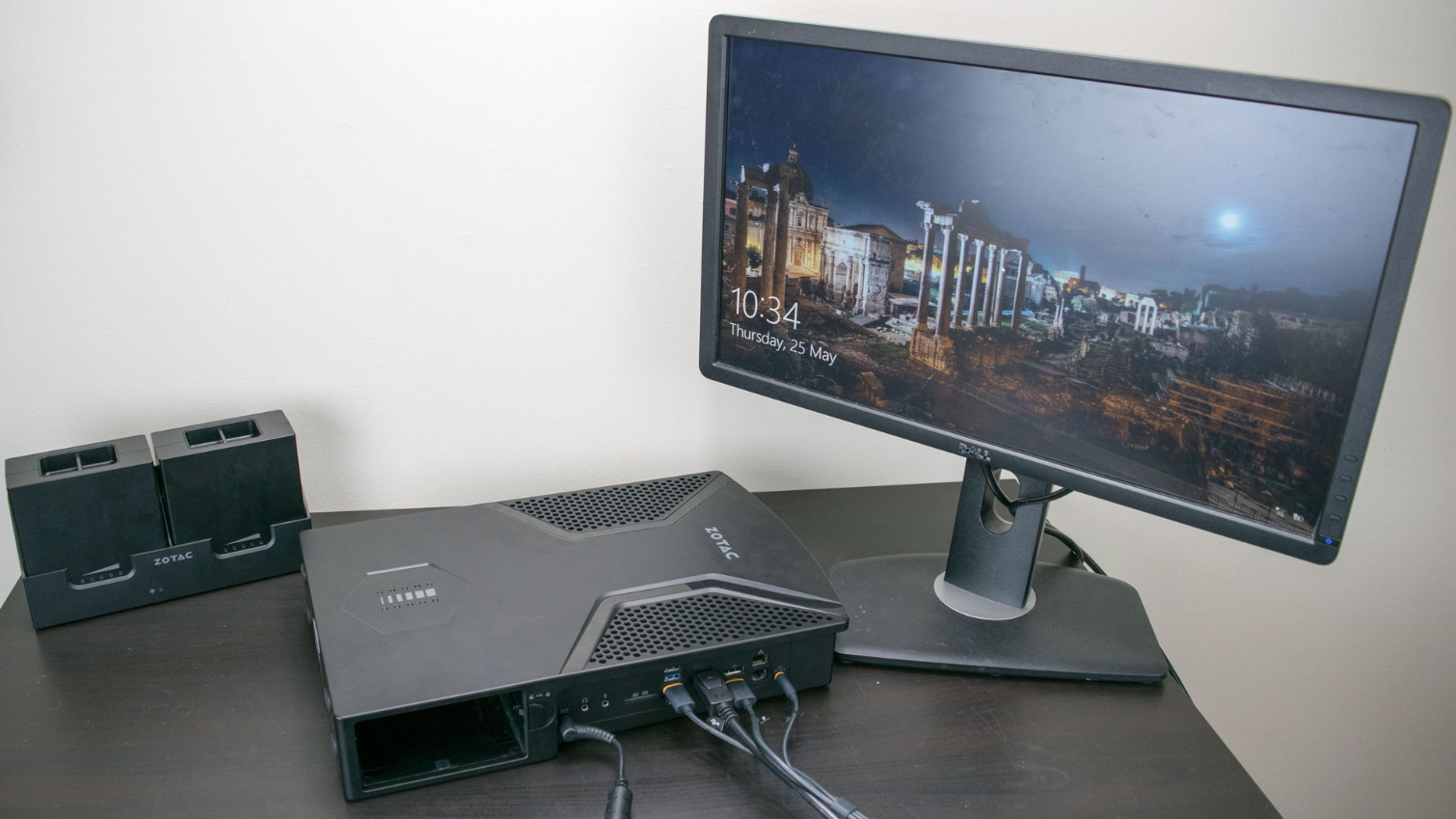Zotac VR Go Backpack PC: A Stop-Gap For Tether-Free VR (Hands On)
Zotac's VR Go Backpack PC promises a tether-free VR experience, and we had a chance to give it a whirl for a weekend and run a few performance benchmarks.
To be clear, we're not talking about just a VR-ready PC here; this backpack is designed as, essentially, a VR only PC insofar as it's, you know, in backpack form and built specifically to solve some of the mobility issues in VR. Unfortunately, due to Oculus's hardware design, the VR Go backpack is compatible only with the HTC Vive. You could use the VR Go Backpack PC as a desktop PC if you wanted to, but you'd be paying a significant premium (more than the cost of a Vive) just for the mobility factor. Zotac offers Zbox machines with similar specifications for half the price of the VR Go.
One of the most glaring issues that holds virtual reality back from reaching mass market adoption is the bulky cable that tethers the headset to your computer or game console. And for a good reason; the tether cable is the most hazardous part of using a VR headset. Tripping over the cable while you spin around playing a game can lead to significant injury and damage to your gear.
The data tether of a VR HMD is also the biggest limiting factor that restricts the maximum theoretical play space. If you need a larger range than the cable provides, there are three ways to do it: You can extend the tether cable to increase your maximum distance, you can switch to a wireless data transmission solution, or you can carry the computer with you. Zotac, being a company that makes compact PCs, focused on that last method with the VR Go Backpack PC.
In an industry that's clearly heading towards wearable VR, Zotac is just a little bit ahead of the curve. A handful of standalone HMDs with the computing power built into the headset should hit the market later this year. (Some are already here.) But those are mobile HMDs mostly built on Google’s Daydream platform and Qualcomm’s Snapdragon 835 VR dev kit. It will take a few years before mobile HMDs can dream of supplanting the premium experience of PC-connected VR systems such as the Oculus Rift and HTC Vive. Zotac’s solution puts a powerful PC on your back so you can experience premium untethered VR today.
It's something of a "tweener" solution, but, well...here we are, in between.
I recently had the opportunity to spend a weekend running a VR demonstration for my local LAN group, in which Zotac sponsored the booth with one of its body-mounted computers for the event. After two long days of helping people put the VR Go Backpack PC and an HTC Vive on, I’ve come to appreciate the benefits of Zotac’s solution, and I’ve learned what I dislike about the setup. Here are my thoughts.
Get Tom's Hardware's best news and in-depth reviews, straight to your inbox.
Meet The VR GO Backpack PC
Zotac is well versed in building small form factor computers. The company’s Zbox lineup crams Intel processors and GeForce graphics cards into tiny form factor cases that are smaller than a typical gaming console. When Zotac decided to build a PC into a backpack, it didn’t try to reinvent the wheel. The company simply plucked a Zbox configuration from its existing lineup and built a new case for the hardware that you could carry on your back.
Zotac doesn't make an effort to point out that the backpack PC concept doens't work with the Oculus Rift. Oculus's Constellation tracking system relies on USB-connected cameras, which require a stationary PC. The Vive works well with a backpack PC because the Lighthouse Base Stations don’t require a connection to the PC.
Zotac equipped the VR Go Backpack PC with a 2.8GHz (up to 3.6GHz) quad-core Intel Core i7 6700T processor, 16GB of DDR4 memory, and an MXM format GeForce GTX 1070 GPU. The system also includes a 240GB M.2 SATA SSD to hold your operating system and a handful of games. If 240GB isn’t enough storage for you, the backpack offers expansion space for a single 2.5-inch SSD. You can also add more memory if you feel so inclined. It’s unclear if you’d be able to upgrade the GPU, but the MXM module suggests it could be possible.

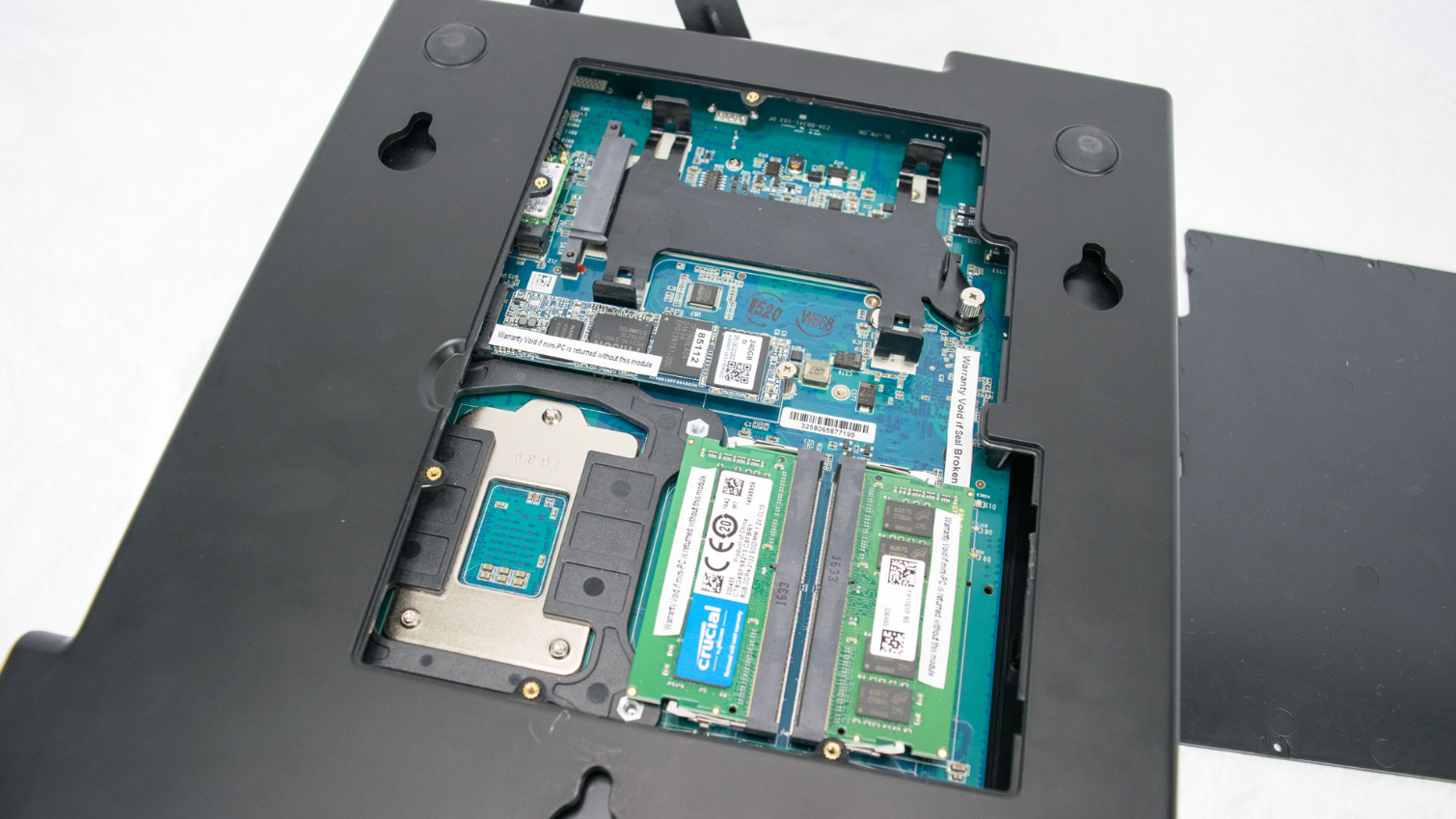




The VR Go backpack features a hard plastic shell to protect the components. The top of the backpack features I/O ports, including a handful of USB ports, an HDMI port, and a power socket for the Vive HMD. There are more ports on the right side, though, including a pair of DisplayPort sockets and more HDMI ports, as well as dual gigabit NICs, more USB ports (four USB 3.0, two USB 2.0), and another power output for the Vive. For reasons unknown, Zotac decided that you should have a choice of where you should plug in your VR headset. You also get an SD card reader, headphone and microphone jacks, and a DC power plug so you can plug the computer into the wall when you need to.
Swap Those Batteries!
The bottom half of the VR Go Backpack is where the batteries fit. Zotac employed a clever power delivery system that comprises two independent, hot-swappable battery packs. There's one battery on each side of the backpack, but the PC can run on one battery at a time. On the back of the case, you’ll find two banks of LED lights that indicate the power level of the battery. When all lights are lit, they shine green. When you’re down to one bar left, the battery light will turn red, and as you approach charge depletion, the LED will start to blink.
As long as you swap a fresh battery to the other side before the first battery runs out, you don’t have to shut the PC down. The system detects when a new battery is inserted into the backpack, and it automatically switches over to draw power from the new battery.
The batteries take approximately one hour to fully charge, so if you time it well, you may be able to maintain constant playtime for several hours. I would have preferred to have two sets of two batteries, or at least a third battery to add to the rotation. During our weekend of demos, we had to shut the booth down every few hours to let the batteries charge all the way back up. The charge time takes a little bit longer than it takes to deplete the batteries (each battery is supposed to last an hour), so throughout the day, we were operating on less and less battery power until we had two dead batteries at the same time.







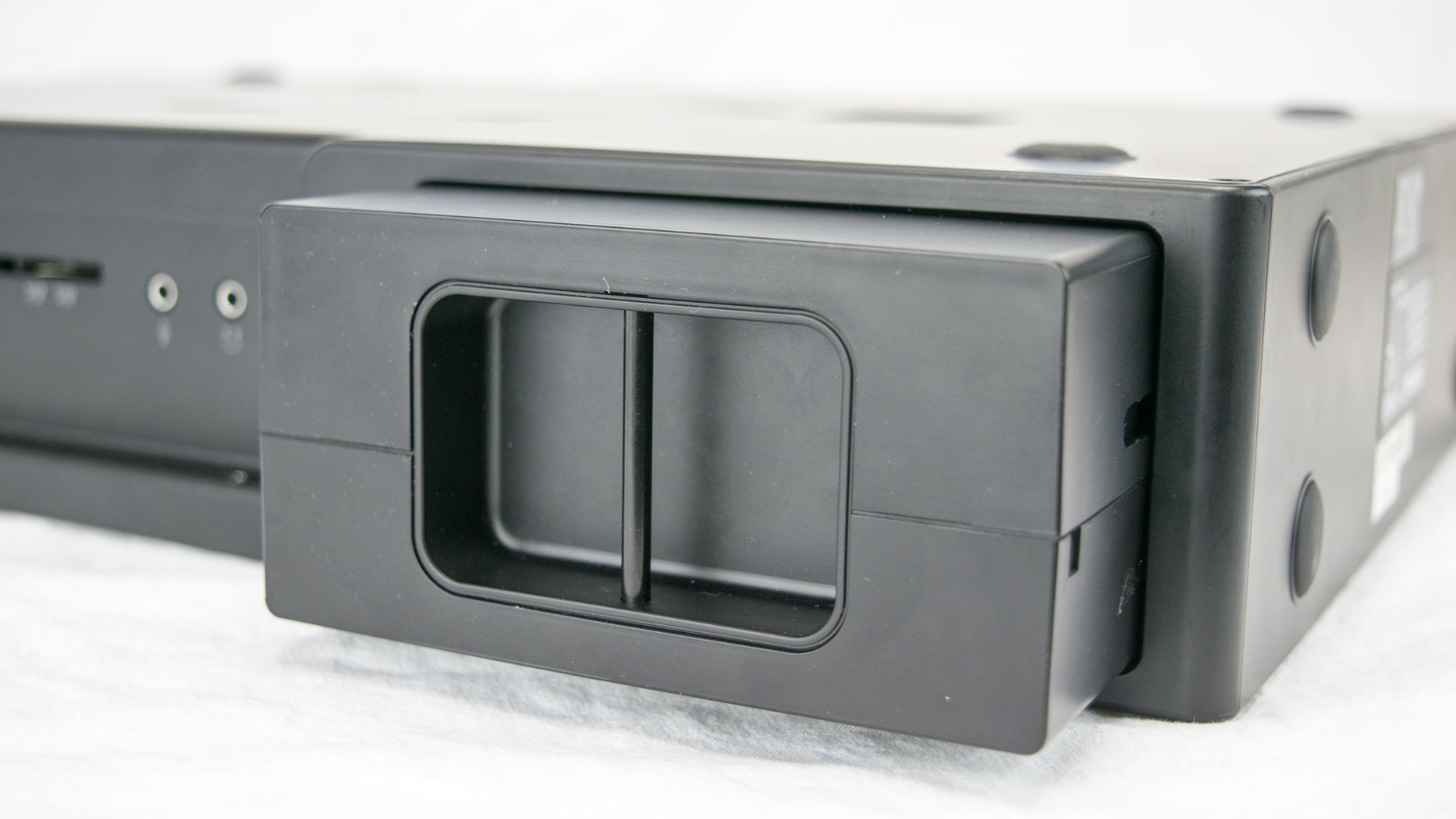
Curiously, the VR Go backpack doesn’t let you charge the batteries while they're installed in the PC. The system has a power jack for an AC adapter, but it doesn’t pass power from the outlet to the battery packs. The batteries must be charged with the included charging dock.
The included charge dock allows you to charge both batteries at the same time. Unfortunately, the power adapter for the charger is the same adapter as the one for the PC. You can use the VR Go backpack as a desktop PC (more on that later), but you can’t do that while you’re charging the batteries.
The VR Go Convertible
Zotac’s VR Go Backpack PC is meant for gamers with VR headsets, but buying a computer solely for VR is waste of money for most people. Zotac engineered the VR Go Backpack PC to work as a desktop computer and convert into a backpack when needed. The straps of the VR Go Backpack PC are removable so the system can sit flat on a table or desk. The padded cushion between the computer and you attaches to the computer with a simple keyhole latch system. To remove straps, pull up the fabric cover in the center of the cushion to reveal the lock. Turn the dial a quarter-turn counterclockwise to unlock the latch. The entire cushion assembly should slide down slightly and let you lift it away from the PC.






Losing The Spectator View
The VR Go Backpack PC allows you to experience a taste of the inevitable future of VR hardware with the freedom of untethered VR today. It’s hard to describe how much of a difference taking the Vive’s tether away improves the VR experience. Following our initial review of the Vive, I was in the camp that said the cable doesn’t impede you and that it isn’t a big deal. My opinion of the tether cable changed after I spent some time with Sixa's wireless VR kit, though. The VR Go Backpack replicates that experience--almost.
Wearing the VR Go Backpack makes the VR experience more immersive because you no longer have to worry about stomping on the tether or tripping over it. When playing with my Vive, I’m always trying to keep track of how many times I’ve turned in one direction so that the cable doesn’t get coiled up while I’m playing. Not worrying about the cable allowed my mind to dive deeper into the virtual experience. I also managed to best my top score in Space Pirate Trainer while wearing the VR Go Backpack.
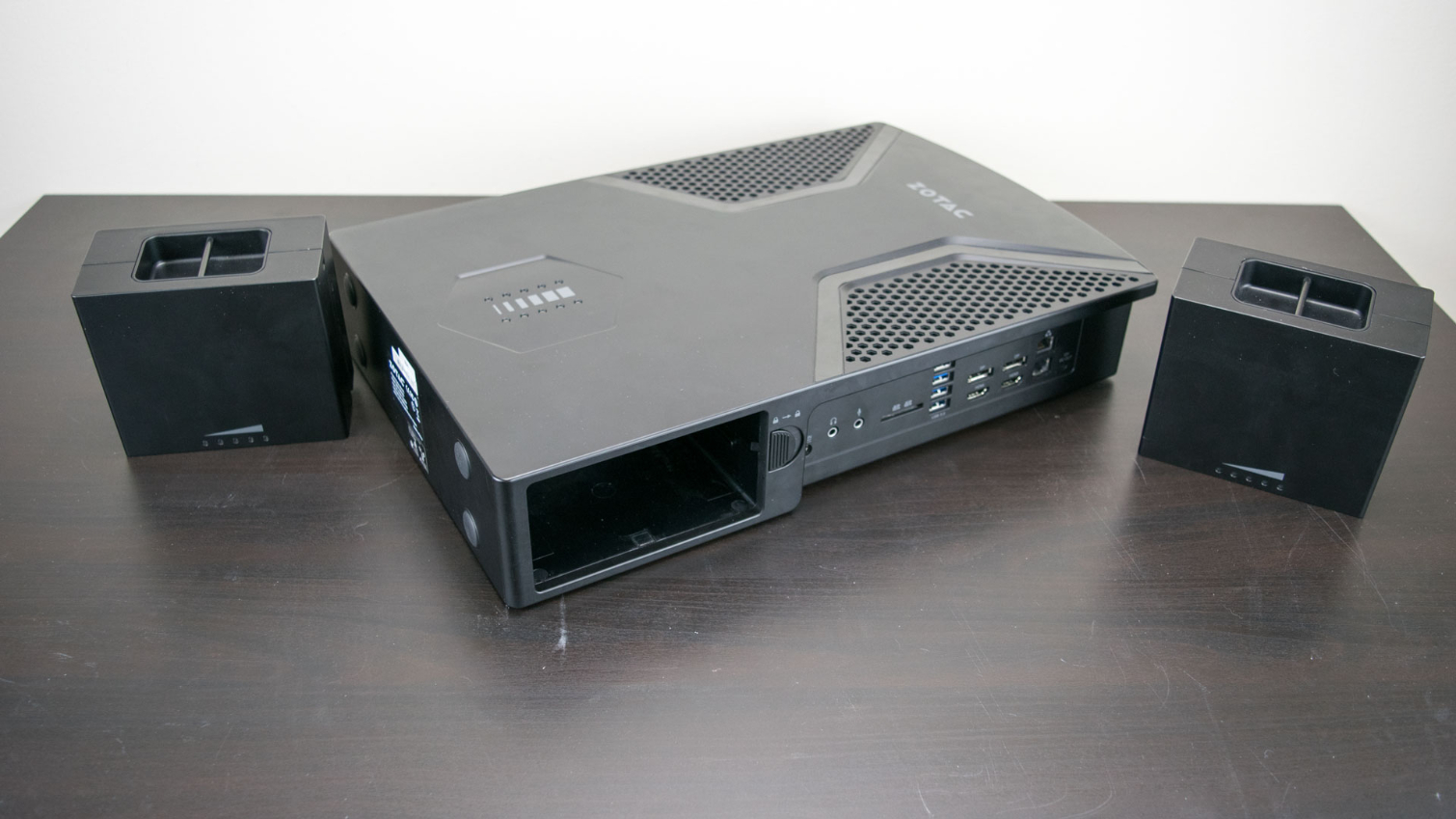








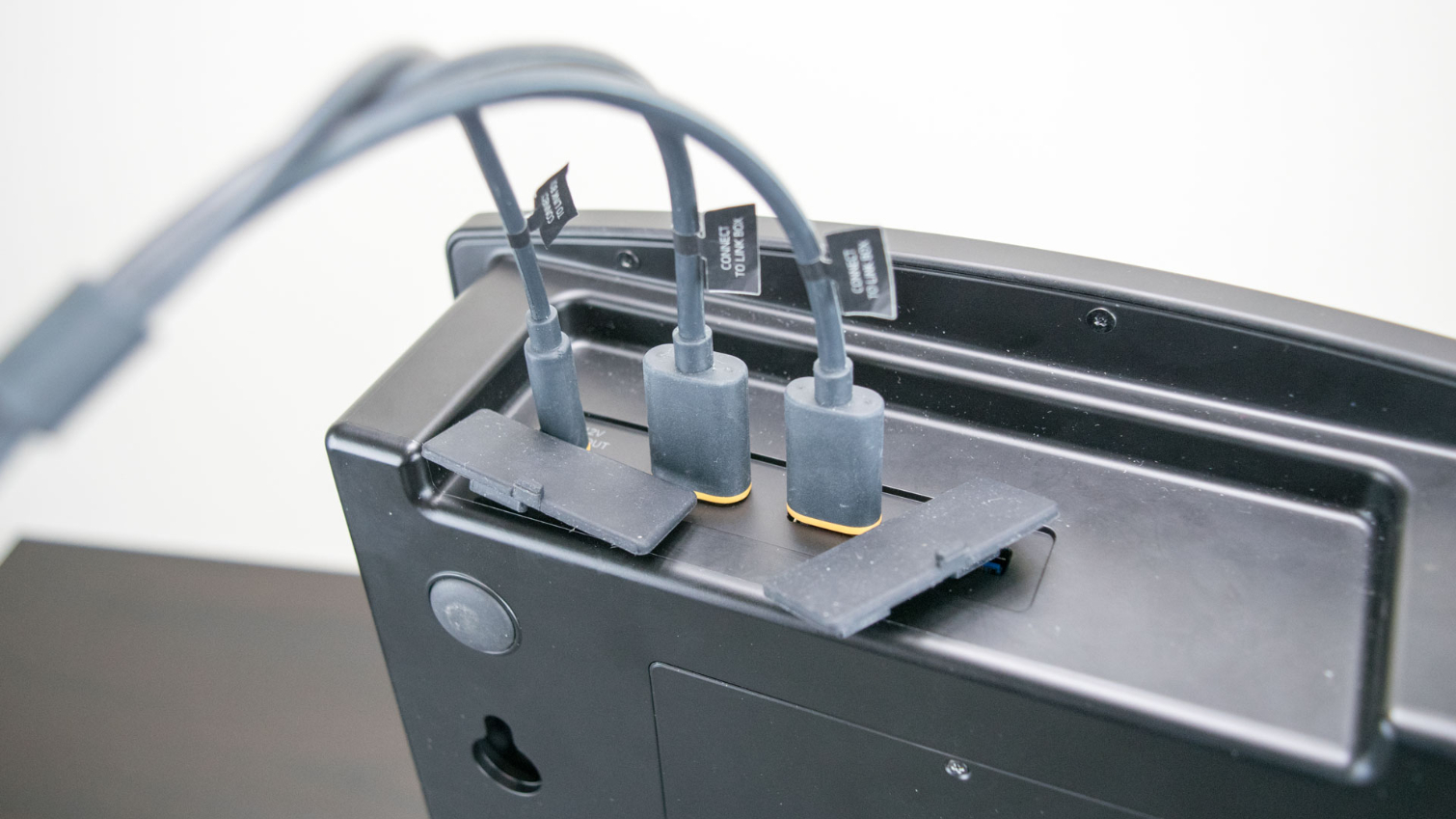

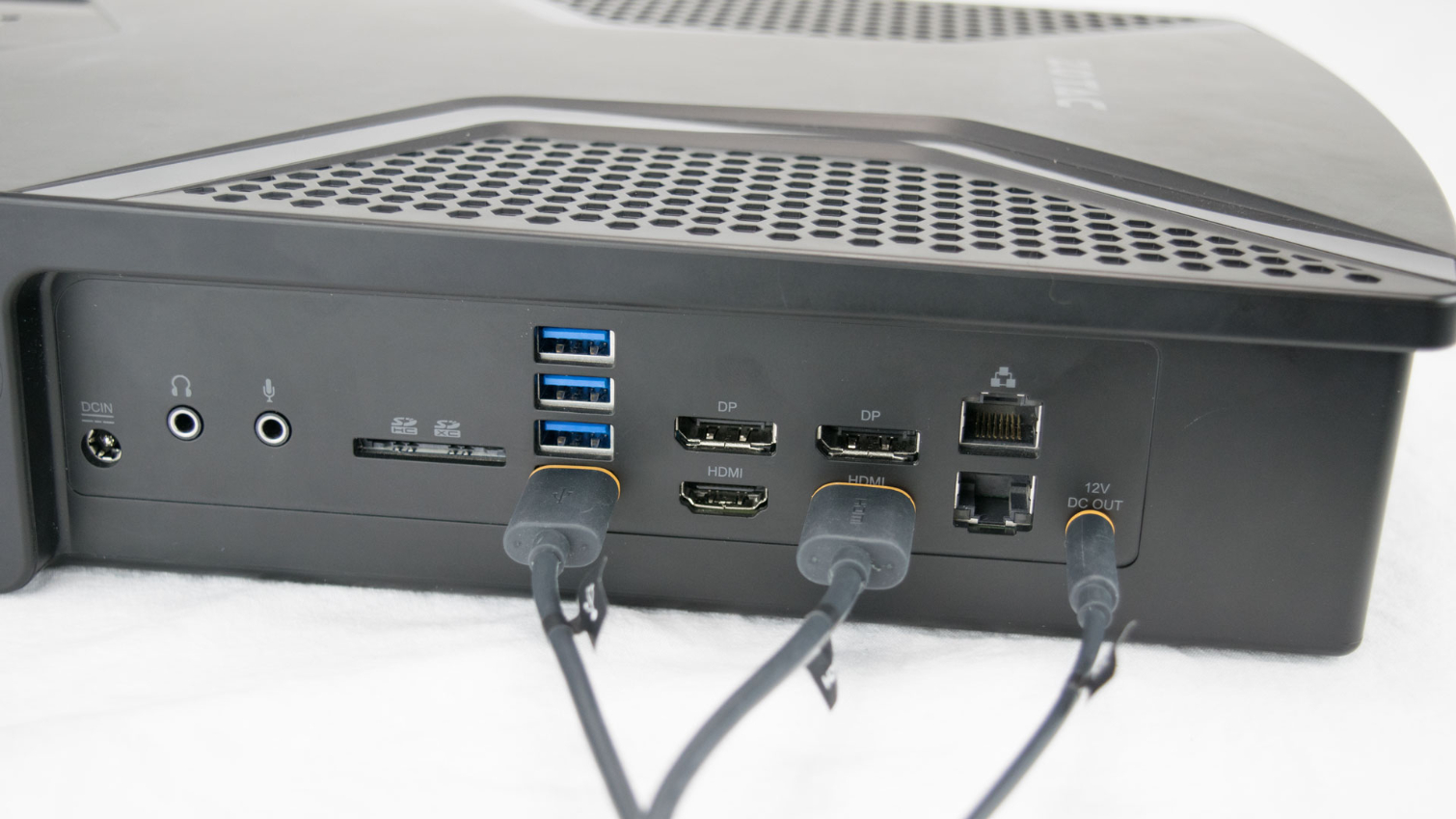
As wonderful as the experience of playing room-scale VR games without a tether was, the setup isn’t without its downsides. For one thing, if you use a VR Go Backpack, no one else can see what you’re doing because you can't keep your display plugged in. In most VR setups, the HMD wearer gets a first-person view of the action, and observers can see what that person sees via the PC's monitor. It's a spectator view, essentially. With the backpack configuration, you lose that display, which is to the detriment of those in the peanut gallery watching the action.
Some of the best times I’ve had with my Vive and Rift involved sharing the experience with my friends. Watching someone flail around with a VR headset without the context of what they are doing is interesting for a few minutes at most, but when you can see what the player sees, you're more inclined to pay attention for a while.
The lack of a spectator view is especially annoying in a public demonstration situation like the event I was helping run, not only because third parties can't see what's going on, but also because it becomes much more difficult for demonstrators to help newbies when they go under the hood. If the HMD wearer presses the wrong button and enters a menu or goes back to the Steam library, for example, it’s nearly impossible to help that person without removing the headset.
(For those diagnostic purposes, we recommend keeping an extra-long HDMI cable on hand so that you can quickly plug in a monitor. We had a 25-foot long cable, and it proved to be a godsend, not only because we could quickly hook the HMD up to a monitor in a pinch, but also because we needed the length. Using a standard six-foot HDMI cable, for example, would have been a pain.)
If I could offer a suggestion for an improvement to the system, it would be to add a small display on the backside of the VR Go Backpack. An embeded screen would help VR Arcade staff get players up and running. It could also let you fire up the computer and launch SteamVR without worrying about connecting the PC to an external display. A wireless display solution would be helpful to solve the spectator problem.
Like Preparing For A Hike
Putting the VR Go Backpack PC on is as simple as putting on a hiker’s backpack. Pull the backpack over your shoulders and connect the belt buckle. There’s also a strap to hold your shoulder straps together across your chest. Make sure the straps are secure to eliminate the risk of the backpack PC from falling off while you play.
It’s easy to put the backpack on by yourself, but its much easier to do with someone to assist you. The headset must be plugged in to the backpack before you put the system on your back. If you’re not careful, its easy to pull the headset off your desk while you put the backpack on. The VR Go Backpack PC is probably better suited for VR arcade installations where an employee can help people put the setup on than it would be for home use.
A Stop-Gap Solution
When Zotac announced the VR Go Backpack PC, it was a fantastic idea and it solved a problem that needed a solution. Everyone knows that the cable on VR headsets must go and when no other solution is apparent, a wearable computer is as good as any solution. The problem for Zotac is that backpack PCs aren’t the only solution. Several companies are gearing up to release wireless upgrade solutions for the HTC Vive, and at least one of them is building a solution that would work with the Oculus Rift. Buying an upgrade kit that costs couple hundred dollars or less is far more economical than buying a backpack PC.
The idea of a VR backpack sounds great at first glance, but once you start digging into the concept, the flaws start to surface. The VR Go backpack is a great solution for VR arcade installations that want to offer the safest experience to their customers and to large-scale VR entertainment setups like The Void, which send patrons through maze-like warehouse-sized experiences that wouldn’t work well with line-of-sight wireless solutions. Buying a VR Go Backpack PC for home use isn't advisable. You'd be better off waiting a few more months for the wireless kits to hit the market.
| Header Cell - Column 0 | Zotac VR Go Backpack PC |
|---|---|
| Processor | Intel Core i7-6700T (quad-core, 2.8 GHz, up to 3.6 GHz) |
| System Memory | 16GB DDR4 SODIMM |
| Graphics | GeForce GTX 1070 8GB GDDR5 256-bit |
| Video Output | 3 x HDMI 2.0 2 x DisplayPort 1.3 (up to 4 displays) |
| Storage | 2.5" SATAIII HDD/SSD bay |
| M.2 | 240GB M.2 SATA SSD |
| Card Reader | 3-in-1 (SD/SDHC/SDXC) |
| I/O Ports | Audio Microphone, Headphone USB Port 6 x USB 3.0 |
| LAN | Dual Gigabit LAN |
| Antenna | 1 x WiFI SMA connetor |
| Wifi | 802.11ac/b/g/n |
| Bluetooth | Bluetooth 4.2 |
| LED Indicators | Power, HDD, Wi-Fi, Batteries |
| Power Supply | O/P: DC 19.5V/180W 2 x 6600 mAh Li-ion batteries (hot-swap supported) |
| Cooling system | Fan + Heatsink |
| ZBOX Dimensions | 410mm x 270mm x 76mm |
| Case Mounting | Backpack and strap |
| Supported OS | Windows 10 Home 64-bit Pre-installed |
| Accessories | 2 x 6600 mAh Li-ion batteries Backpack Strap Battery charging dock WiFi antenna AC Adapter Power Cord Warranty Card User Manual Quick Install Guide USB drive with O/S driver Driver Disc |
| MSRP | $2599 |
Kevin Carbotte is a contributing writer for Tom's Hardware who primarily covers VR and AR hardware. He has been writing for us for more than four years.
-
velocityg4 Couldn't you achieve the same thing by hooking up a gaming laptop to a large battery (power bank)?Reply
As it allows an HDMI connection. Couldn't you use a wireless HDMI transmitter for spectator views. -
mac_angel I think it would make more sense to have a separate PC and work on a much smaller back pack to make the headset wireless and longer battery life.Reply -
primcrew1 my vr room space is in my living room but my normal pc gaming area is in my bedroom. i didnt want to have 2 computers or to lug a big case back and forth and i so hate the dam cable on the ground and before wireless vr was known i decided to make my own vr backpack. my goal was to put the whole computer on my back with the lowest weight possible and have power supplied by a extension cord in pull/counterweight system. the first prototype was about all in all 25 lbs and had the cable retract system fail after awhile doing 360 turns.Reply
the second prototype uses a dan case a4sfx case and my whole powered pc case and all weights about 10 lbs and the alice backpack rig adds another 5 lbs. the second prototype has a slip ring connection between the rig and the extension cable and im able to do 360s with no cords on the ground and since i dont have to worry about batteries i could play pretty much hours if i wanted too.
in a quick pricing if i built what i have in my pc now today with the included backpack rig connections and counterweight system with shelf would cost me
about 2k not including vive vs their 2600.
this includes me being able to upgrade my pc when i want too and not having to buy another computer. -
Rob1C It would be great to run Google Earth. Go hiking and see what's up ahead, even at night. A new thing, VR Tourism.Reply
Go to an empty field and run Google Moon or Mars.


